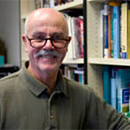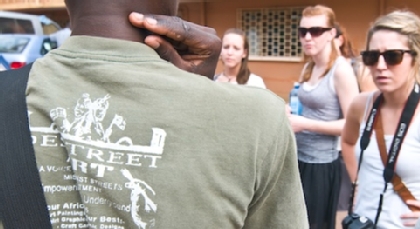Page 1 • (49 results in 0.028 seconds)
-

Michele Crayton Professor Emeritus of Biology Email: craytoma@plu.edu Professional Education M.S., Plant Physiology/Development, Oregon State University, 1974 M.S., Biology, University of Missouri at Kansas City, 1969 B.S., Biology, University of Missouri at Kansas City, 1967 Areas of Emphasis or Expertise Toxic freshwater cyanobacteria
Contact InformationArea of Emphasis/Expertise -

For some, summer is a time for play. For others, it’s a time for work. But for many at PLU, it’s a time for a little bit of both — through science.
Northern Hemisphere. They are similar to salmon, in that they live mostly in marine environments but travel to freshwater to spawn. However, there are several populations that live out their lives in rivers or lakes close to the ocean. (Video by Rustin Dwyer, PLU) Their behavior, biology, and body shape or skeletons shift depending on their environment, Schutz said. These various environments are ideal for studying how the sexes evolve differently. “This capacity for variability in sticklebacks makes
-
Appendix A. PLU Confined Spaces Type of Confined Space RisksEntry Protocol Attic Crawl Space – No motorized equipmentFall Hazard (in some areas)Permit Required Confined Space unless Fall Hazard can be controlled from the outside. If fall hazard can be controlled from the outside, then Alternate Entry Confined Space Attic Crawl Space –Motorized equipment presentAtmospheric Hazard Fall HazardAlternate Entry Confined Space Boiler Firebox Atmosphere – oxygen deficiency and toxic gases Temperature
-
Photo: https://pierceprairiepost.com/2014/06/17/happy-summer-vacation/ Dear Pierce County Residence, During recent Summer seasons recreational activity in Spanaway lake has been halted by toxic algae blooms. To make the lake safe again for summer activities we must ensure that we reduce fertilizer runoff into the watershed by properly applying product, choosing a variety that requires one coating a year, or planting hardy native species in your lawn that don’t require fertilizer. It’s up to our
-
Photo by Claire Todd Dear Pierce County, The management of invasive species is a key component when developing restoration sites in an attempt as a means to re-establish the native plant species. From our work in my Environmental 350 course at PLU, we discovered that herbicides are heavily used to diminish the invasive plant population. They are efficient and cost effective. However, the application of herbicides have unintentional environmental risks: they are toxic to applicators and they
-
the watershed, so that more trash can be removed to reduce the pollution that comes from it. In addition, impervious surfaces allow for toxic pollutants to get into the watershed and our water sources through runoff so I believe that in the future, Pierce County should try to incorporate more pervious surfaces as urbanized development continues. Should less pervious surfaces and more trash become present in this watershed, there will be greater observed impacts on water quality that could be
-

.” (Photo by Theodore Charles ’12) Lake Victoria, the largest freshwater lake in the world, houses a vast array of wildlife a majority of the fish that I have been consuming in Kampala. The smell is breathtaking, much like gardening on a hot day, with a thick smell of earth and sweet smell that I have yet to identify. We hopped into a van and headed forty-five minutes across a crazy traffic filled stretch of roadway into the heart of Kampala for groceries. Everyone was incredibly exhausted and after
-
Spend the Summer with the National Toxicological Research Center Posted by: nicolacs / January 6, 2017 January 6, 2017 Summer research opportunities are available at the National Center for Toxicological Research (NCTR), U.S. Food and Drug Administration (FDA) in Jefferson, Arkansas. Selected individuals will participate in research projects on the biological effect of potentially toxic chemicals and the solutions to toxicology problems that have a major impact on human health and the
-
paper towels are a minimum of 40% post consumer waste. None of these supplies were manufactured through a bleaching process or de-inked. Our daily use cleaning products are Green Seal approved. They are formulated to lesson the impact on the environment. They are non-toxic, phosphate free, biodegradable, non-flammable, and do not contain any dyes or fragrances.
-
used bottles produces toxic byproducts such as chlorine gas and ash containing heavy metals. An estimated 25% of bottled water is actually bottled tap water. In the academic school of year 2010-2011, a new student led initiative will be put into action, “Bring Back the Mug.” The goal, is to afford students the opportunities to purchase coffee mugs, cutting back on our cardboard products and raising the same awareness that TBTT has brought to campus. Stay tuned for more information on BBTM, and if
Do you have any feedback for us? If so, feel free to use our Feedback Form.


